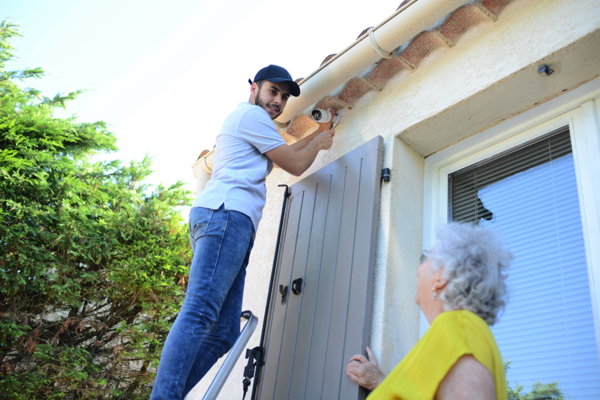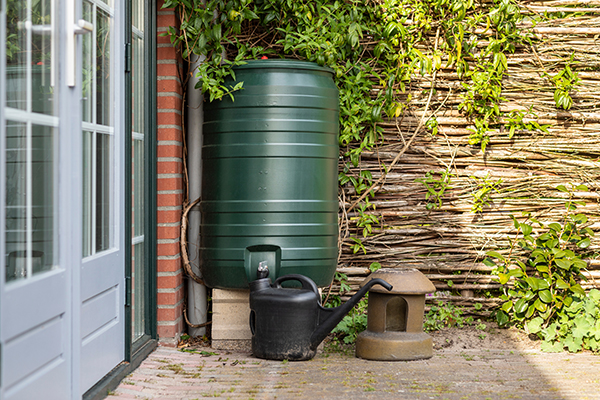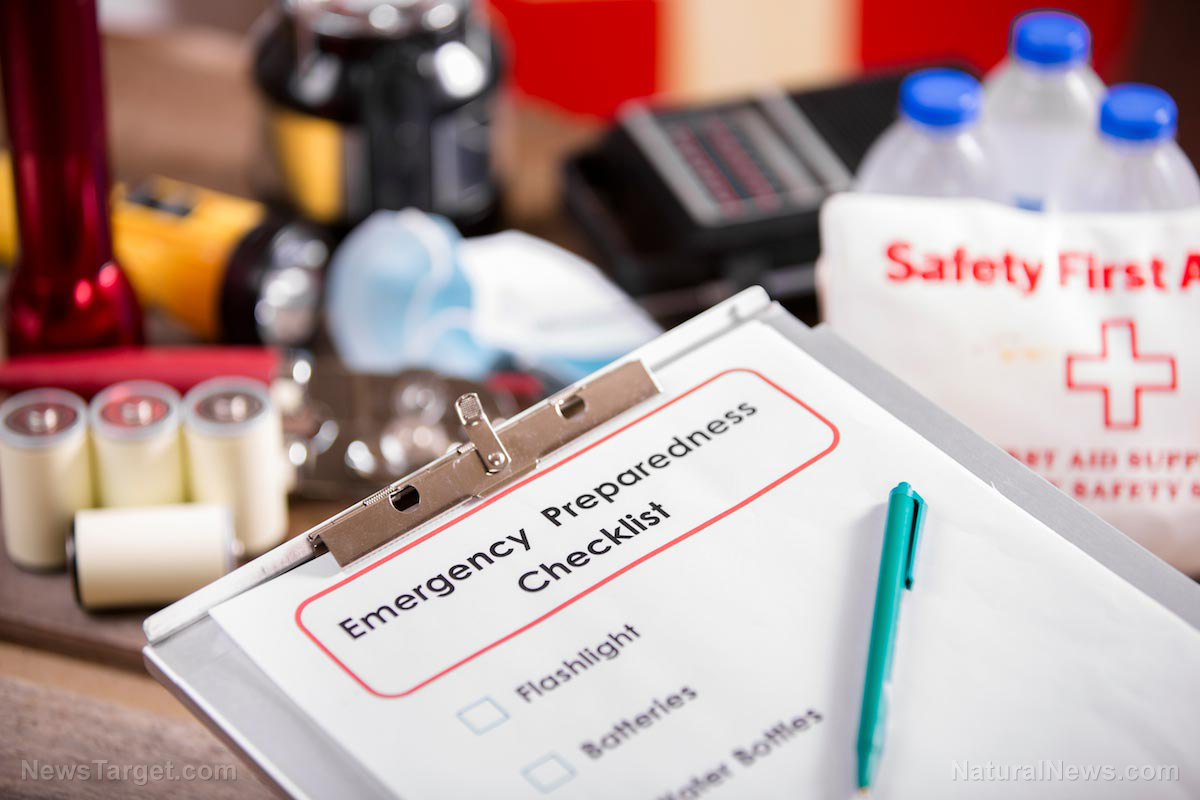Essential home security tips: Protecting your property without electricity
11/20/2024 / By Olivia Cook

Here are some home security measures you can take to protect your property that do not require electricity.
Perimeter security
Begin by fortifying your property perimeter with measures that blend into the surroundings. Install natural or low-profile fencing that provides a barrier without signaling high-value assets within your property. Avoid overt displays of barbed wire or other deterrents that may attract attention.
Maintain a clear view of the street and all entrances by trimming or removing tall bushes and trees that could conceal potential intruders. Ensure that branches are kept away from windows and the roof to prevent easy access to the upper floors. Pay special attention to securing basement windows. Additionally, consider installing convex security mirrors to eliminate blind spots and further deter burglars.
Defensive landscaping
Your yard can act as a deterrent. Plant thorny bushes or spiky shrubs under windows and along fence lines and place large rocks or bollards to prevent vehicles from approaching too closely. This setup not only adds a layer of security but also blends with the aesthetic of your home. (Related: Home security tips: Top 12 defensive plants that can help deter trespassers.)
Consider using anti-climb paint, also known as anti-burglar, anti-intruder, anti-vandal and anti-scale paint. This type of paint is designed to deter intruders by creating a non-drying, slippery surface that is difficult to climb. It can be applied on various building surfaces such as rooftops, drainpipes and wall/fence tops. The paint can last up to 10 years.
But be aware of legal requirements when using anti-climb paint: Clear warning signs must be placed in the treated area and it should be applied at least two meters above ground level.
Keep your preparations private
Avoid drawing attention to your preps. Use privacy films on windows to prevent outsiders from seeing inside. Bring in supplies discreetly, preferably when fewer people are around. Camouflage storage areas to make them look like regular household items. Install inconspicuous security cameras positioned strategically to monitor critical areas discreetly. Consider a solar-powered closed-loop camera system that operates independently of the internet to ensure reliability even during power outages.
Discourage home invaders
Don’t make your home an appealing target. Avoid showcasing expensive items and keep a low profile. Use props like a large dog food bowl or men’s work boots to give the impression that your home is occupied and guarded.
Make your home a noisy target
You can top your fences with sturdy trellises that produce noise when tampered with. This will provide added security by alerting you to attempted breaches. Think about incorporating elements that provide auditory alerts, such as a noisy metal latch on your gates.
Consider installing a gravel path in your garden for added security awareness. The sound of gravel crunching underfoot can serve as an audible alert, notifying you of anyone approaching your home or crossing your garden.
Burglars prefer quiet and discreet entry to avoid detection. Install window and door alarms to deter potential intruders. Alarms will sound if doors or windows are opened, alerting you, your neighbors and passersby, increasing your chances of catching intruders.
Illuminate your property
Consider investing in low-profile, solar-powered motion-sensor flood lights to illuminate entry points discreetly. Install them at least 10 feet off the ground to make them less accessible and more difficult to tamper with. Choose a model that runs on rechargeable batteries for easy setup and placement.
Keep in mind that motion sensor lights may not be as effective in areas with low foot traffic or if criminals are aware that you’re not home. Nevertheless, in most situations, these lights can act as a deterrent. The sudden illumination caused by a motion sensor light can startle intruders and increase the likelihood that they’ll abandon their plans and move on to a less risky target.
Reinforce your doors
For external doors, install deadbolts, ideally surface-mounted ones as they are more resistant to tampering. Single occupants should use heavy-duty, grade 1 or grade 2 deadbolts for enhanced strength and security against forced entry.
Upgrade your door’s strike plate — the metal piece that the latch or bolt slides into. Us a reinforced strike plate with longer screws and a deeper box to make it harder for intruders to kick in the door.
Consider using door jammers or door security bars. These adjustable metal bars brace against the floor and the doorknob, adding an extra layer of security. They are particularly effective for sliding doors and patio doors.
Secure your windows
Ensure that all accessible windows are fitted with high-quality locks. Regularly inspect these locks and replace any that are damaged to prevent unauthorized entry.
Window security bars and grills are great for reinforcing windows. Anti-theft bars make it difficult for burglars to pry open windows, while interior security grills maintain the home’s exterior appearance.
Apply shatter-resistant window film to help prevent glass from breaking easily in case of an attempted break-in. This film keeps the glass together even after impact, making it tougher for intruders to enter. Install window bars on ground-level or secluded windows to create a more formidable barrier.
Secure your garage
Make sure to close and lock both your garage door and windows. It’s easy to forget to secure the garage when you’re in a rush, so consider setting a daily reminder on your smartphone to check the garage door before you leave. You can enhance security by installing a padlock on the inside of the door or a hasp on the outside. For added protection, cover your garage windows with curtains or blinds. This prevents burglars from seeing any tools or valuable items inside, making your garage a less appealing target.
Use canine security
A barking dog can be an effective deterrent against burglars. They have an instinct to protect their territory and pack (you and your family), and their presence alone can deter potential intruders who may fear confrontation with a protective animal.
Even if your dog isn’t a trained guard dog, a smaller breed that barks frequently can help draw attention and scare off intruders. Make sure you train your dog to differentiate between threats and non-threats, respond to commands and behave appropriately in various situations.
Choose the right self-defense tools
Select appropriate personal protection weapons such as firearms (if legal) or non-lethal options like pepper spray and tasers. Practice using these tools to ensure you can respond effectively in an emergency. (Related: Self-defense 101: Ways to protect yourself when facing a dangerous situation.)
Foster neighborly vigilance
Security is often strengthened by community effort. Build strong relationships with your neighbors and look out for one another. Communicate regularly about any unusual activities and keep each other informed to enhance overall safety. A visibly united and vigilant neighborhood can deter potential threats as intruders may perceive a coordinated defense as a formidable obstacle. Establishing a neighborhood watch or alliance allows for the sharing of defense strategies and information about potential threats. This collective awareness enhances preparedness and response capabilities.
Conduct regular drills
Ensure that all household members are familiar with emergency procedures by holding regular training sessions. Practice using security systems, evacuating to a safe room and executing escape plans. Regular drills will help everyone know their roles and respond effectively during a crisis.
Stay alert, stay prepared and prioritize the safety of your loved ones.
Visit SelfDefense.news for more stories like this.
Watch this video for more home invasion survival tips from a Navy SEAL.
This video is from the Daily Videos channel on Brighteon.com.
More related stories:
Home defense plays an important role in survival after SHTF.
Alarms, doors and perimeter protection: Keep your family safe with these 10 home defense strategies.
Home security: 3 Ways to protect your homestead.
Sources include:
Submit a correction >>
Tagged Under:
home security, homesteading, how-to, off grid, preparedness, prepper, prepping, self-defense, SHTF, survival, tips
This article may contain statements that reflect the opinion of the author
RECENT NEWS & ARTICLES
Homesteading.News is a fact-based public education website published by Homesteading News Features, LLC.
All content copyright © 2018 by Homesteading News Features, LLC.
Contact Us with Tips or Corrections
All trademarks, registered trademarks and servicemarks mentioned on this site are the property of their respective owners.




















